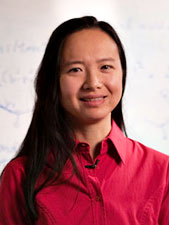|
 Using complex computer simulations University of Houston physicists are shedding new light on the workings of a crucial protein that when malfunctioning can cause Alzheimer’s and other diseases. Using complex computer simulations University of Houston physicists are shedding new light on the workings of a crucial protein that when malfunctioning can cause Alzheimer’s and other diseases.
Margaret Cheung, assistant professor of physics at UH and Antonios Samiotakis, a physics Ph.D. student, published their findings in an October issue of the journal Proceedings of the National Academy of Sciences. The research was funded by a National Science Foundation grant.
Studying the PGK enzyme, Cheung used computer models that simulate the environment inside a cell. Biochemists typically study proteins in water, but such test tube research is limited because it cannot gauge how a protein actually functions inside a crowded cell, where it can interact with DNA, ribosomes and other molecules.
The phosphoglycerate kinase (PGK) enzyme plays a key role in process of glycolysis, the conversion of food to energy and is present in every organism, from yeast to humans. Malfunction of the glycolytic pathway has been linked to Alzheimer’s disease and cancer, since out-of-control metabolic rates are believed to fuel the growth of malignant tumor cells.
Scientists had previously believed the enzyme had to undergo a shape transformation in order to perform its metabolic function. However, in the computer models mimicking the cell interior, Cheung found that the enzyme was already functioning in its closed state, without any shape change. In fact, the enzyme was 15 times more active in the tight spaces of a crowded cell.
This work deepens researchers’ understanding of how proteins function, or don’t function, in real cell conditions, Samiotakis said. |

